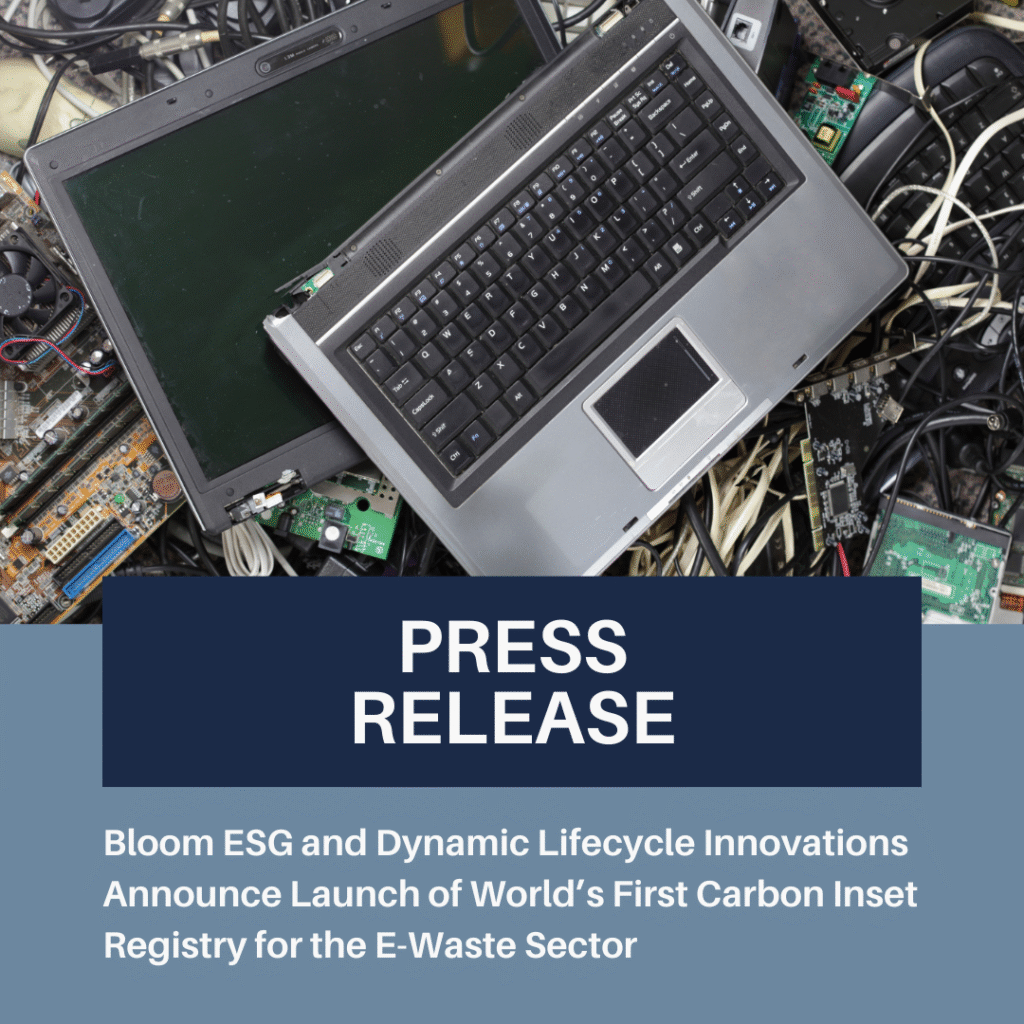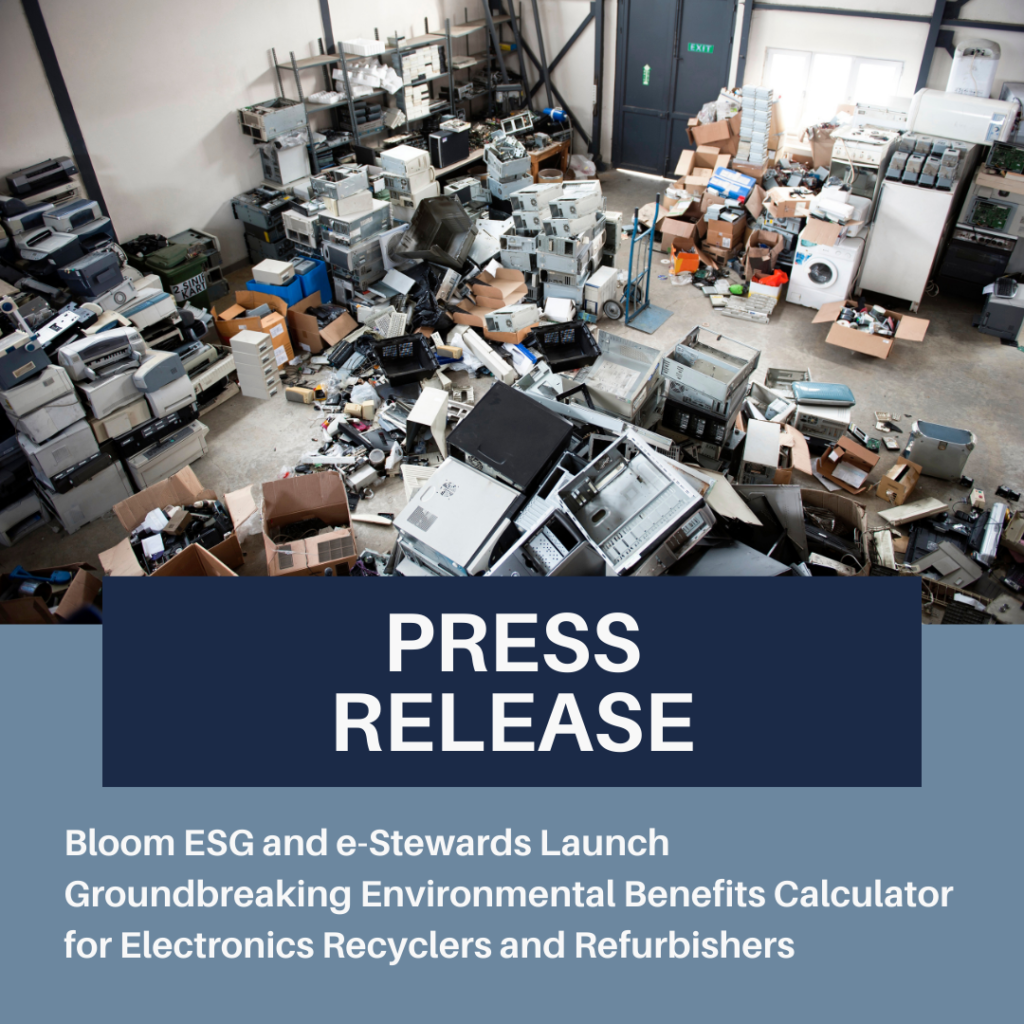Avoided Emissions Methodology
Unlocking Greenhouse Gas (GHG) Reductions
through Recycling Activities
Contact us to learn how your organization can benefit from this innovative approach to emissions reduction.

Bloom ESG’s “Estimated Avoided Emissions from Recycling Activities” methodology offers a standardized way to measure greenhouse gas (GHG) emission reductions from recycling and refurbishing waste materials. By recovering valuable resources from electronic and solid waste, organizations can reduce their environmental footprint and contribute to the circular economy.
Backed by International Standards
Our methodology builds on the proven principles of UN CDM AMS-III.BA and AMS-III.AJ methodologies and is validated under ISO 14064-1/2 and ISO 14064-3/4 standards by Earthood Services Limited, the world’s leading auditor of carbon offset projects.
How It Works
We calculate “avoided emissions” by comparing:
● Recycling emissions: Energy consumption involved in recovering materials.
● Virgin production emissions: The emissions from producing the same materials from scratch
By replacing virgin materials with recycled ones—such as metals, plastics, and components—this methodology empowers projects to quantify their environmental benefits.
Contact Us

Amanda Bond
Directoramanda@bloom-esg.com

Sebastian Foot
Founding Partnersebastian@bloom-esg.com
Key Requirements for Participation
To apply this methodology and generate avoided emissions certificates, organizations must:
Sort and process waste at dedicated facilities.
Measure the output of recovered materials.
Monitor energy and fuel consumption.
Ensure no double counting of avoided emissions.
Benefits of the Methodology
Quantifiable Environmental Impact:
Clearly demonstrate GHG reductions.
Sustainability Reporting:
Enhance transparency and reporting accuracy.
Circular Economy Incentives:
Support the adoption of secondary materials.
Ideal for Industry Applications
This methodology is designed for:
● Recycling facilities
● Refurbishing centers
● IT asset disposition (ITAD) providers
By embracing these practices, businesses can not only reduce emissions but also champion sustainability and drive wider adoption of eco-friendly practices across industries.
Ready to make an impact?
Contact us to learn how your organization can benefit from this innovative approach to emissions reduction.
Read the full press release here.
Contact us
to get started.
Related Insights
Bloom ESG and Dynamic Lifecycle Innovations Announce Launch of World’s First Carbon Inset Registry for the E-Waste Sector
PRESS RELEASE Dynamic Lifecycle Innovations becomes first ITAD and electronics recycler globally to receive and…

